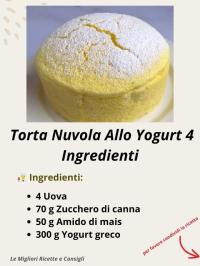Copy Link
Add to Bookmark
Report
HOMEBREW Digest #1787

This file received at Hops.Stanford.EDU 1995/07/21 PDT
HOMEBREW Digest #1787 Fri 21 July 1995
FORUM ON BEER, HOMEBREWING, AND RELATED ISSUES
Rob Gardner, Digest Janitor
Contents:
Finings, flaked barley and solutions (Aidan "Kicked in his conspiracies" Heerdegen)
Re: Sorghum and Nigeria (Art Steinmetz)
Re: pear beers ("Andrew D. Kailhofer")
Hops harvesting (Btalk)
What's an EASYMASHER ? (Bruce Taber)
Mail Order Beer of the Month Clubs? ("Rich Byrnes")
Burnt Banana Beer (ahoeberichts)
Grapefruit Stout ("Palmer.John")
Deposits on Kettles. (Russell Mast)
Re: Brass is okay in beer. (Dion Hollenbeck)
chilling samples and carboys/ redundant posts (Eamonn McKernan)
Cherry/Raspberry Ale (TULLY_PAUL/HP1700_03)
Redhook Blueline Pilsner (Norm Hardy)
RIMS construction (Phil Meyers)
Brewing Questionnaire (Gaspar James M)
Agar Agar-How Much? (BixMeister)
Copper thickness & type (Kyle R Roberson)
Brewpubs in the Cinci, Dayton, Columbus, & Indy areas (AGNORCB)
Re: Does Cara-Pils Contribute to High FG? (Aidan "Kicked in his conspiracies" Heerdegen)
purging during racking (karns1)
Airlocks (John DeCarlo )
Cleaning glass -- Hop Q's (Steven Lichtenberg)
a style question (DONBREW)
Re: Liquid gauge on corny keg (Jason Goldman)
Homebrew newbie (Jeff Foley)
Hops (Bill Hatch)
Belch! (kpnadai)
Airlocks & altitude changes (Jay Reeves)
Re: Homebrew on campus ("Mark W. Wilson")
RE decompressing files (MAC) (Tim_Fields_at_Relay__Tech__Vienna)
Re: Wort Dilution (Jim Dipalma)
******************************************************************
* POLICY NOTE: Due to the incredible volume of bouncing mail,
* I am going to have to start removing addresses from the list
* that cause ongoing problems. In particular, if your mailbox
* is full or your account over quota, and this results in bounced
* mail, your address will be removed from the list after a few days.
*
* If you use a 'vacation' program, please be sure that it only
* sends a automated reply to homebrew-request *once*. If I get
* more than one, then I'll delete your address from the list.
******************************************************************
#################################################################
#
# YET ANOTHER NEW FEDERAL REGULATION: if you are UNSUBSCRIBING from the
# digest, please make sure you send your request to the same service
# provider that you sent your subscription request!!! I am now receiving
# many unsubscribe requests that do not match any address on my mailing
# list, and effective immediately I will be silently deleting such
# requests.
#
#################################################################
Send articles for __publication_only__ to homebrew@hpfcmi.fc.hp.com
(Articles are published in the order they are received.)
Send UNSUBSCRIBE and all other requests, ie, address change, etc.,
to homebrew-request@hpfcmi.fc.hp.com, BUT PLEASE NOTE that if
you subscribed via the BITNET listserver (BEER-L@UA1VM.UA.EDU),
then you MUST unsubscribe the same way!
If your account is being deleted, please be courteous and unsubscribe first.
Please don't send me requests for back issues - you will be silently ignored.
For "Cat's Meow" information, send mail to lutzen@alpha.rollanet.org
ARCHIVES:
An archive of previous issues of this digest, as well as other beer
related information can be accessed via anonymous ftp at
ftp.stanford.edu. Use ftp to log in as anonymous and give your full
e-mail address as the password, look under the directory
/pub/clubs/homebrew/beer directory. AFS users can find it under
/afs/ir.stanford.edu/ftp/pub/clubs/homebrew/beer. If you do not have
ftp capability you may access the files via e-mail using the ftpmail
service at gatekeeper.dec.com. For information about this service,
send an e-mail message to ftpmail@gatekeeper.dec.com with the word
"help" (without the quotes) in the body of the message.
----------------------------------------------------------------------
Date: Wed, 19 Jul 95 19:00:54 EST
From: Aidan "Kicked in his conspiracies" Heerdegen <aidan@rschp2.anu.edu.au>
Subject: Finings, flaked barley and solutions
Full-Name: Aidan "Kicked in his conspiracies" Heerdegen
Algis R Korzonas (korz@iepubj.att.com) wrote:
>> Andy writes:
>>
>>What is the purpose of using flaked, and I presume unmalted barley,
>>in a beer?
>
>First of all, unmalted grains taste different from malted grains.
<tekanogickle stuff deleted>
I was told that the addition of flaked barley to a Dry Irish
Stout was what made it just that ... dry.
Comments?
Sergio Escorza Trevi~o (sescorza@sdcc3.ucsd.edu) wrote:
<re solutions>
>Let's see if I can help to clarify things a little bit. In the
>calculations that I presented, there was no error. But they
>didn't match with the ones presented by Martin Manning in his
>article in BT, because we were calculating DIFFERENT things. The
>reason was that he was disolving sugar in ENOUGH water to make a
>gallon of solution (what he calls, and I agree, yield), while I
>was disolving the same amount of sugar IN one gallon of water
>(what Dave Miller calls, at least in a couple of places in his
>books, yield.
Indeed .. and in chemistry terms (if you want to go and look up
a chem textbook to help you out) one is molality and the other
molarity.
Brian Pickerill (00bkpickeril@bsuvc.bsu.edu wrote):
>Larry Hawley writes:
>
>>My kegged beer has not been as clear as I would like (all extract)
>>and I am considering using polyclar, inisglass, silica gel or gelatin.
>>Every source I have sists a different way to use these finings. Do you
>>add to the primed beer, or in the secondary? How much do you use and
>>for how long? If there is a Finings.FAQ around I would appreciate
>>knowing where. By the way I do use Irish Moss in my boil.
>
>Most of the time I don't use any finings, but my weizen looked
>really hideous so I decided to prime with gelatin. Since I was
>almost out of HB, I didn't use a secondary either and it was
>really cloudy in the keg--I had hoped it would clear in the keg
>but it didn't. I just boiled about 2-3 oz of water to sanitize
>it, dissolved a package of Knox gelatin in that, cooled it and
>added it to the keg. A day later the beer is much clearer and it
>definitely improve the look of the beer. Perhaps it will clear
>some more--I only added the gelatin last night.
I am not going to comment on polyclar and silica gel as "I KNOW
NOTHING" to quote Sgt. Schultz, but I have recently managed to
sort out the whole gelatin / isinglass thing in my head.
Isinglass is used in real-ale kegging coz you can fine with it,
it will clear your beer and then when you move it again (round
you cellar perhaps) it will clear your beer again when stirred up.
Gelatin will not do this, it is a once only "beer-kleer" (tm)
;)
*So* gelatin should be used in secondaries and not in bottles and
kegs (unless you think they'll stay reasonably still!), so you
can rack off ... the beer (did any of our US bretheran get that
joke?) from the "gook" (that's technical brew talk) before it
gets stirred up again.
Apparently Gelatine also only works at below 10degC .. so to use
it effectively you'll need to use it in your secondary *and* keep
it cold.
Cheers
Aidan
P.S. This could, of course, all be complete drivel.
- --
aidan@rschp2.anu.edu.au,
WWW: http://rschp2.anu.edu.au:8080/aidan
------------------------------
Date: Tue, 18 Jul 95 19:33:02 EDT
From: (Art Steinmetz)
Subject: Re: Sorghum and Nigeria
n HBD #1781, Andy Donohue writes:
>It seems that in Africa in general and Nigeria in particular quality
>malted barley is both rare and expensive due to the climate.
Well, not due to the climate, exactly. It's rare and expensive because the
govt. prohibits its importation.
- -- Art
asteinm@pipeline.com
76044,3204@compuserve.com
------------------------------
Date: Wed, 19 Jul 1995 07:58:28 -0500
From: "Andrew D. Kailhofer" <andy@aerie.bdy.wi.ameritech.com>
Subject: Re: pear beers
Sylverre Polhemus writes:
>HOMEBREW Digest #1785, 07/19/95
>Hey, Collective, a quick question:
>
>Do any of you have recipes (ale, stout, lager -- no lambics) using
>pears, pear nectar, or pear juice? A friend tried some several
>yeas back and hasn't yet stopped raving about it. I've gotten a bit
>curious myself.
>
>Tried the usual sources (Cat's Meow, etc.)
>
>I'm not all-grain yet, but I might try it with the right recipe.
Well, I made a pear beer once, and it was my second finest beer so far
in fifty batches.
St. Patrick's Pleasant Pear Ale (started on St. Patrick's Day)
Use Wyeast German Ale yest.
1/2# 40L crystal steeped from cold to 180F in 2gal water, then rinsed
and removed. 3# Munton-Fisson light unhopped + 3# Laaglander light
unhopped + 1# honey. At boil + 10 (T+10), add 3/4 oz. 5.2% Cascade.
At T+55 (45 minutes later) add 2t Irish Moss. At T+70, add 1/2oz
Saaz. Immersion chill. Add water to achieve 5 gal. *Aerate*.
Pitch.
OG = 1.062
After two days, puree 5# pears (actually, I just used a sanitized
potato masher on 5# of pears that I froze earlier in the fall), and
treat with 2 campden tablets. Rest the pears for 48 hours to clear
the campden.
Two days later (a total of four days), rack the beer onto the pears.
I left the beer on the pears for two weeks, racked again, and bottled
after another month. FG = 1.010.
The pear wasn't very pronounced at first, but it really evolved in an
amazing way. After a year, this was the most incredible beer. I'm
definitely going to make this again this fall. Of course, these days
I'll do a full-volume boil rather than 2 gallons. I might even do an
all-grain of it (like our totally, absolutely killer Oatmeal Stout #3,
the best one of 50 batches, probably the best one of 100 batches), but
if I don't, it won't bother me in the least. This was a *fine* beer.
Cheers!
- --
Andy Kailhofer Sr. Analyst, Ameritech Network Services 414/678-7793
a907932@nast0.bdy.wi.ameritech.com FAX: 414/678-6335
740 N Broadway, Room 430, Milwaukee, WI 53202-4303
pXoXsXtmaster@ameritech.com Member: League for Programming Freedom
------------------------------
Date: Wed, 19 Jul 1995 09:21:56 -0400
From: Btalk@aol.com
Subject: Hops harvesting
My 3 year old Tettnang hop plant is producing qute a few cones.
The cones started showing up 3 weeks ago or so, and new cones have been
developing ever since.
Because of the time spread of cone development it is obvious that they won't
all be 'ripe' at the same time.
My question is when to harvest the little buggers?
Should I periodically pick a bunch of cones as they are ready or just wait
until the whole plant is ready.
It seems that by waiting that some of the cones will be past prime.
Picking in small quantities is somewhat of a hassle, but at this point there
aren't that many to deal with.
Any thoughts/experience with this?
Also, what about controlling Japanese Beetles?
Regards,
Bob Talkiewicz, BInghamton, NY <btalk@aol.com>
------------------------------
Date: Wed, 19 Jul 1995 09:58:25 -0400
From: ce033@freenet.carleton.ca (Bruce Taber)
Subject: What's an EASYMASHER ?
This is my first post ... ever .... to anywhere. I'm so excited!
I wonder if it's really going to go anywhere when I hit SEND ?
Oh well, wait and see.
I've been lurking for a few months. I think the HBD is great.
There's stuff for every level of homebrewer. Everything from "I
forgot to add the can of thick brown stuff to the boiling water.
IMBR ?" to that really boring stuff on water analysis. I mainly
brew extract with specialty grains. I have tried all-grain
brewing but my equipment is a bit undersized for an all-grain
5 gal. batch.
Anyway, here's my question. I'll start with a real easy one and
then work my way up to being a real HBD pest.
What is an EASYMASHER ? I've heard of them but I have never seen
a description.
I'm so excited about my first post that I don't think I'll even
stop to think of a witty tag line to sign off with.
Thanks in advance.
Bruce
------------------------------
Date: Wed, 19 Jul 1995 10:37:15 EDT
From: "Rich Byrnes" <rich.byrnes@e-mail.com>
Subject: Mail Order Beer of the Month Clubs?
Apologies in advance if this was already covered, but could some kind
soul mail me a copy of the different "Beer of the Month" clubs? This
is for a buddy who would like someone to take his hard earned money
and give him 2 6-packs a month in return, go figure!
TIA!
Regards,_Rich Byrnes Jr
B&AO Pre-Production Color Unit \\\|///
phone #(313)323-2613, fax #390-4520 (.) (.)
Rich.Byrnes@E-mail.com_____________________o000__(_)__000o
------------------------------
Date: Wed, 19 Jul 95 11:06:20 EST
From: ahoeberichts@epsilon.com
Subject: Burnt Banana Beer
Beer Folks,
I'm thinking about making a smoked banana beer.
I can figure out how to get the smoke flavor but I was wondering if
anyone had any ideas about how to get the banana flavor.
I read in the Cat's Meow some guy steeped sliced banana with skin in a
nylon bag for 30 minutes. How will this differ from putting bananas
in the secondary?
What's a good yeast (I was thinking American)? I don't want this to
be a wheat beer. Hops? Grains? Any ideas.
Feel free to respond by e-mail. I'll post my final recipe if the beer
turns out ok.
amh@epsilon.com
----------------------------------------------------------
---- Candy is dandy, but homebrew rhymes with nothing ----
----------------------------------------------------------
------------------------------
Date: 19 Jul 1995 08:15:31 U
From: "Palmer.John" <palmer@ssdgwy.mdc.com>
Subject: Grapefruit Stout
Jeff asks what could have caused the high grapefruit flavor of his Stout:
I see three things that probably contributed to it besides the Cascade Hops.
(Which really dont make a good Stout hop IMO)
1. You pitched directly from the wyeast pak, without a starter. This tends to
produce a weak initial fermentation, generating more diacetyl and other
secondary compound than would be normally be produced at higher pitching
levels.
2. The yeast was pitched at 78F, this is a bit too high, definite ester
country.
Primary ferm at 72 is still a tad high. I use 65F for Irish yeast.
3. Priming with honey may have contributed because it often has a high aroma
component that could be accentuating the esters.
Give it about two months in the bottle to condition. I am confident that it
will smooth out nicely.
John
John J. Palmer - Metallurgist for MDA-SSD M&P
johnj@primenet.com Huntington Beach, California
Palmer House Brewery and Smithy - www.primenet.com/~johnj/
------------------------------
Date: Wed, 19 Jul 1995 10:14:57 -0500
From: Russell Mast <rmast@fnbc.com>
Subject: Deposits on Kettles.
Is it possible that the precipitates in kettles could provide a source of
calcium and other minerals which could be good for beer? Or bad for beer?
I've often wondered about this. Chicago water is chock full of limestone
and tons of it shows up after evaporation, but in the mildly acidic and very
hot and active environment of a full boil, perhaps some of it could come into
solution. Anyone have any numbers on this?
I would imagine that in a fermenter these deposits would be primarily neutral.
-R
------------------------------
Date: Wed, 19 Jul 95 08:57:53 PDT
From: hollen@megatek.com (Dion Hollenbeck)
Subject: Re: Brass is okay in beer.
>>>>> "John" == Palmer John <palmer@ssdgwy.mdc.com> writes:
John> Richard wanted to know if using brass fittings in a 3 tier
John> stainless steel system is okay. "Yes." I use a few brass
John> fittings in mine. Its not a corrosion or contamination
John> problem. I would not be so quick to recommend them for high
John> usage commercial systems, but they are commonly used there also.
John> If you use the 2:1 vinegar/hydrogen peroxide soak for 15 minutes
John> to remove any surface lead, then you will have absolutely
John> nothing to worry about.
OK, John, so how do you react to the blurb in BT about the FDA
"outlawing" brass in contact with food pH < 7 ? (page 12, v3n4). Is
this just another one of the FDAs, "Well, we're not sure so we'll just
disallow it" cover their ass schemes??
I use a small number of brass fittings and have always basically
agreed with you in regard to this issue. I still am not going to
worry, but maybe the FDA has some "proof" behind their "guidelines".
What is really crazy is that this applies to "copper and copper
alloys". I can maybe understand a cause for concern of lead in brass,
but pure copper???
dion
- --
Dion Hollenbeck (619)675-4000x2814 Email: hollen@megatek.com
Staff Software Engineer Megatek Corporation, San Diego, California
------------------------------
Date: Wed, 19 Jul 1995 12:58:35 -0400
From: eamonn@chinook.physics.utoronto.ca (Eamonn McKernan)
Subject: chilling samples and carboys/ redundant posts
With respect to the temperature correction of SG thread:
Going to all the hassle of chilling hydrometer samples seems kind of wasteful.
After all, free time during brewing is supposed to be spent drinking, so the
more free time the better. Now I hate doing math on weekends, so fancy
temperature correction formulae don't interest me. And it's not like we need
super accuracy if all we need to know is when to stop sparging. Noonan's
book has a handy table at the back for correcting SG: just subtract the given
number for the temperature of your sample. (subtraction IS math, but it's
easier than multiplication, and can be done without paper or calculators).
If typing weren't such a chore (two fingers only when I really get going), I'd
reproduce this table. Maybe some kind soul on the HBD who can type fast will
help out here. At any rate, even if this is only a first order correction,
it's probably all the accuracy needed. And tasting works too, as Jim recently
suggested. If you do insist on chilling samples, chill to the correct
temperature if you really want that accuracy. "It feels chilled" could be off
by a large amount.
****
The wet towel around the carboy suggestion has re-surfaced. One caveat: put
some sanitizing agent in the water, or you could get mould forming in that
lovely warm, wet environment. Chlorine evaporates after a week or two, and
smells bad. Something iodine based should work.
****
Hey people, if someone else has already posted some information, please
delete redundant posts that are due out the following day. Of course, if
you're responding to more than one posting, you don't want to go back
to the beginning of the queue, but otherwise we can pack more info into our
digests, eh? (Canadian eh!) I noticed several SCAM postings after a summary
had already appeared. Just a thought.
****
Boy do I have bad luck with e-mail:
Chris Barnhart, your address is not working! (yes I used "reply")
Eamonn McKernan
eamonn@atmosp.physics.utoronto.ca
"...Canada insists on being, to a large extent, a nation of nitwits...
many of the people who scream the loudest about crooked politicians are
too ignorant to vote." -The weekly Tribune, Campbelton, N.B.
------------------------------
Date: Wed, 19 Jul 95 11:10:00 -0600
From: TULLY_PAUL/HP1700_03@mailhub.cs.itc.hp.com
Subject: Cherry/Raspberry Ale
Last weekend I attended the Vermont Brewers Festival and tasted some very
delicious cherry/Raspberry Ale. I was wondering if anyone has a recipe
for either Cherry/Raspberry Ale or a Raspberry Ale.
Paul_Tully@Hp1700.desk.hp.com
------------------------------
Date: Wed, 19 Jul 95 10:40 PDT
From: norm@polstra.com (Norm Hardy)
Subject: Redhook Blueline Pilsner
REDHOOK Blueline Pilsner
I stumbled onto the availability of their new "seasonal" beer here in
Seattle last night, July 18.
The promotional sheet says:
"Our pilsner has very clean and delicate malt flavors with a
refreshing mouthfeel. The bouquet is appetizingly fresh from the
distinctive Saaz hop notes.
"Barley varieties: 2-row Klages, Pilsen, Munich, Cara Pils, and
Carastan.
"Hop varieties: Tettnagg and Saaz.
"The very special characteristics in this beer are a result of a
unique mashing. The fermentable sugars are coaxed from the malt
through a series of temperature rises in the mash tun. The resultant
beer demonstrates a full range of the malted barley flavors.
"There is only a small amount of this beer, it is to be savored. The
alcohol content is 4% by weight. Bitterness Units ar 33. Lagering
time = 6 weeks"
- -------------------------------------------------------------------
My impression? It is very smooth and delicate. The hop bitterness
and flavor is attractive. I will go to the Trolleyman Pub and have
another, soon.
But, from one who has tasted Pilsner beers in the "old country",
this one is pretty bland in regards to the malt character. They make
it sound like a step-infusion mash is a big deal. They've got the
computerized equipment to easily do that. But can't that equipment
perform a decoction mash? It's obvious that the use of the Munich
and Carastan malts indicates the need for more malt character.
All in all, not a bad effort. I give it a B+.
I also give the marketing department an A.
------------------------------
Date: Wed, 19 Jul 95 12:59:40 -0500
From: Phil Meyers <Phil=Meyers%TS=Deskcase%CS=Hou@bangate.compaq.com>
Subject: RIMS construction
Hey all...
I am in the process of building a RIMS system. What would you
consider to be the best treatice on RIMS systems? Money is not
an issue since I want to build the best possible system that
will last for many bbls to come!
TIA,
Phil
Private email, please. I'll post a summary of responses, if I
get any. :-]
------------------------------
Date: Wed, 19 Jul 1995 14:08:24 -0500
From: Gaspar James M <jmg7730@usl.edu>
Subject: Brewing Questionnaire
BREWING QUESTIONNAIRE
My name is James Gaspar. I am an architecture student at the
University of Southwestern Louisiana. I am distributing this questionnaire
in an effort to gather information that will be very helpful to me in
developing my architectural thesis. This test questionnaire is being posted
on the Homebrew Digest to reach as broad a range of brewers as
possible. All responses to this questionnaire will be confidential and will
only be used in my thesis research. *This questionnaire is the property of
James M. Gaspar and it may not be used for purposes other than the
collection of data to be used solely by James M. Gaspar.*
This questionnaire is being distributed to individuals like yourself who
are interested in brewing beer. This includes those who have
a passing interest, are currently brewing for home consumption, and those
in the brewpub and microbrewery industry. If you know someone who
would be interested in completing this questionnaire please make it available
to them.
DIRECTIONS
The questions are divided into 4 sections:
If you are a non-brewer, please answer questions 1-4 and 38-51.
If you are a homebrewer, please answer questions 1-16 and 33-51.
If you are a brewpub and/or microbrewery brewer, please answer
questions 1,2,17-51.
When you respond to a question you need only include the question number
followed by the appropriate response. There are three types of questions,
each with a specific response. The first question type has a series of
responses preceded by a letter.
e.g. 1)What color is your wort?
A. black
B. green
C. you don't want to know
To respond just give the question number followed by the letter of your
response. e.g. 1) C
The second question type has responses that do not have letters preceding
them but are in all capitals.
e.g. 2) What percentage of your time is spent answering:
DUMB QUESTIONNAIRES
STUPID QUESTIONS
To respond give the question number followed by your response.
e.g. 2) 5%,50%
The third question type requires you to answer as completely as possible.
e.g. 3) What was it like your first time (brewing that is)?
To respond give the question number followed by your response.
e.g. 3) It was really messy but I liked it and ...
Please send your responses to this questionnaire to the following
address: jmg7730@usl.edu
Now please take a few minutes to answer all applicable questions.
**************************************************************
1) Currently, I am:
A. an interested, non-brewer
B. a homebrewer
C. a brewer at a brewpub
D. a brewer at a microbrewery
E. other (please explain)
2) How did you become interested in brewing beer?
A. magazines/books
B. television
C. friends/family who brew
D. enjoy good beer
E. other (please explain)
3) If you are a non-brewer, but intend to become a homebrewer when do
you anticipate starting to brew your own beer?
A. 6 months or less
B. 6-12 months
C. 1-2 years
D. 2+ years
4) If you are not interested in brewing your own beer please explain your
interest in homebrewing and your reasons for not brewing.
5) As a homebrewer do you purchase equipment and supplies:
A. locally
B. mail order
C. both (if so, percentage of budget on each)
6) How much money do you spend annually on homebrewing?
EQUIPMENT
SUPPLIES
7) What type of supplies do you use?
A. extract
B. all grain
C. both (if so, percentage of batches form each)
8) Where do you brew your beer?
A. basement C. garage E. other (please explain)
B. kitchen D. backyard
9) If you brew regularly how often do you brew and what size batch?
10) If you brew infrequently, how often and how much do you brew?
11) On a monthly basis, how many gallons do you brew?
A. 5 gallons C. 15 gallons
B. 10 gallons D. 20+ gallons
12) How many hours per month do you spend on the process of brewing?
13) How long have you been brewing?
14) How many individuals, including yourself, are involved in your
brewing process?
15) How many persons consume your beer on a monthly basis?
16) What type(s) of beer do you brew? (Please give type and gallons per
month of each)
17) Do you experiment (vary the recipe) with different types of brews? If so
which brews were successful and why; which were unsuccessful and why?
18) What are your goals as a homebrewer?
**************************************************************
19) How did you become involved in the brewpub and or microbrewery
business?
A. homebrewer expansion
B. entrepreneurial interest
C. brewpub expansion (microbrewery)
D. other (please explain)
20) If a homebrewer turned professional how long did you brew before
going professional?
21) In business since?
22) Types of beer brewed and gallons per month of each?
23) Capacity has:
A. increased
B. decreased
by______ gallons
24) Annual gross sales?
25) Annual net profit(loss)?
26) Ownership?
A. franchise
B. independently owned
C. publicly owned
27) Do you serve food in your brewpub? Type?
A. full menu
B. limited menu
C. none
28) What percentage of your business is from:
BEER SALES
FOOD SALES
29) Average number of customers per month?
30) How long have you been brewing professionally?
31) How many people are involved in the brewing process?
32) How many hours per week do you spend on the brewing process?
33) Are you involved in other aspects of the business operation?(please explain)
34) What are your goals as a professional brewer?
**************************************************************
35) Have you had any formal brewing instruction?
A. yes
B. no
36) If yes to question 35 then please list: LOCATION, TYPE OF
INSTRUCTION, CLASS SIZE, HOURS AND COST.
37) In the programs that you attended, please describe the elements
(e.g. class size, cost, facilities, equipment, instructional format, etc.)
that you felt were beneficial and why, also those that were not
beneficial and why.
38) If you have never had formal brewing instruction, how did you learn
to brew? (please explain)
39) If you were to receive formal instruction what type would you prefer?
A. weekend instruction
B. weekday instruction (short courses)
C. evening instruction
D. extended instruction (Diploma)
E. other (please explain)
**************************************************************
40)Where is your residence?
CITY, STATE
41) What is your sex?
A. female
B. male
42) Marital status?
A. single C. single parent
B. married D. married with children
43) What is your age group?
A. 21-29 D. 50-59
B. 30-39 E. 60-69
C. 40-49 F. 70+
44) Household income?
A. $10,000-24,999 D. $55,000-69,999 G. $100,000-114,999
B. $25,000-39,999 E. $70,000-84,999 H. $115,000-129,999
C. $40,000-54,999 F. $85,000-99,999 I. $ 130,000+
45) Housing?
A. own
B. rent
46) Highest level of schooling?
A. High school D. 3 years of college G. Doctoral (type)
B. 1 year of college E. Degree (type)
C. 2 years of college F. Graduate (type)
47) How easy was it to understand the questions?
48) Was it necessary to interpret questions?
49) Did the questionnaire ask for information that you felt was private and
should not be on a questionnaire?
50) How long did it take you to complete the questionnaire?
51) Would you be willing to answer another, shorter, questionnaire?
*************************************************************
Thank you for completing this questionnaire. Your time and effort are
very much appreciated. Thank you again.
Cheers,
James Gaspar
------------------------------
Date: Wed, 19 Jul 1995 19:54:31 -0400
From: BixMeister@aol.com
Subject: Agar Agar-How Much?
Could some knowledgeable yeast culturist give me an idea how much Agar
Agar(dried
seaweed) to use with 8 ounces of wort in order to make a brewing agar media
for culturing yeast. I want to pour the gelatinized solution into
polystyrene petri dishes. Also ideas concerning maintaining sterile media
would be helpful.
BixMeister
------------------------------
Date: Wed, 19 Jul 1995 17:44:14 -0700 (PDT)
From: Kyle R Roberson <roberson@beta.tricity.wsu.edu>
Subject: Copper thickness & type
I few issues ago I posted a message asking about how thick
the copper was in copper kettles and what type of copper they
were made out of. I herewith summarize the results for HBD
readership:
Posted messages- none
email messages- none.
As a research engineer and former scientist at a national
laboratory, I recognize that negative results are just as
important as possitive ones. So I can say that probably
no one reading HBD knows the answers and definately no one cares
about the subject. I declare this thread stillborn.
Cheers,
Kyle
------------------------------
Date: Thu, 20 Jul 1995 03:53:09 -0400 (EDT)
From: AGNORCB@miavx1.acs.muohio.edu
Subject: Brewpubs in the Cinci, Dayton, Columbus, & Indy areas
Hi! I am going to be traveling in the Indianapolis, Cincinnati, Columbus, and
Dayton areas in the near future and would like some suggestions on good
brewpubs or beer bars to go to in these towns. Private e-mail is preferred.
Thanks a million.
Craig Agnor
agnorcb@muohio.edu
------------------------------
Date: Thu, 20 Jul 95 19:53:41 EST
From: Aidan "Kicked in his conspiracies" Heerdegen <aidan@rschp2.anu.edu.au>
Subject: Re: Does Cara-Pils Contribute to High FG?
Full-Name: Aidan "Kicked in his conspiracies" Heerdegen
Steve Schultz wrote:
| I recently made a batch of brew involving two 3.75 lb. cans of
| Cooper's Real Ale, and two packets of the dry kit yeast, re-hydrated.
| Had vigorous fermentation for 2-3 days, then it stopped at 1.024.
| I have re-aerated the wort (probably to the point of terminal
| oxidation), but still-- 1.024. I've also added more dry yeast.
| Tonight I'm adding a 1.5 qt. yeast starter, made from Wyeast Ale
| Blend (1087?). This is my final attempt. After this I will just
| bottle it, irrespective of FG, and take my chances.
| In a recent edition of Zymurgy, someone tested this recipe and
| had, if I remember correctly, an FG of 1.012. My only deviations
| from the recipe were adding 4 oz. of wheat malt (my standard addition
| to every recipe, for head retention), a pound of crystal malt, and
| about one-half pound of cara-pils. I know cara-pils adds body -
| that's why I tried using it for the first time - but does it make
| for a high FG?
Cara-pils and crystal will both add residual sweetness from
unfermentable sugars and (consequently) higher FG's.
Assuming you are making a 5 gal batch, the crystal and cara-pils
could add about 6 points to your FG (using a hand-waving figure
of 10 pts/lb/gal). This would get you into the 1018 range for FG,
which is still probably slightly high.
Theory: This is something that my mate Dave Hansen (who is
lurking here) came up with, and I agree. We reckon that the
yeast that the dried yeast Coopers provides *requires* some
simple sugars (as suggested in the recipe on the can) to ferment
out properly .. or at the very least can't manage to ferment
alot of more complex sugars. He had a problem with high terminal
gravities when using Coopers kits and unhopped LME (and no sugar)
but didn't have such a problem when using some sugar and some
unhopped LME with the kit .. and no problem when he cultured the
yeast from a Coopers bottle conditioned beer (the yeast they use
to brew the commercial beer is different to the dried stuff).
What yeast did the recipe in Zymurgy use (here is where my theory
bites the big one)? I would suggets using a WYeast to begin
with. Ditch the Coopers dried yeast .. if it is the same stuff
as they use here it is not as good as WYeast IMO.
Cheers
Aidan
- --
aidan@rschp2.anu.edu.au,
WWW: http://rschp2.anu.edu.au:8080/aidan
------------------------------
Date: Thu, 20 Jul 1995 07:36:06 -0400
From: karns1@hrpi6.DNET.hcc.com
Subject: purging during racking
I was wondering if it is necessary to purge your carboy with co2 or N2 when
racking some beers or meads? Is this procedure critical for mead racking
only? Whats the best way to purge your carboy with co2?
------------------------------
Date: Thu, 20 Jul 95 08:05:36 EST
From: John DeCarlo <jdecarlo@mitre.org>
Subject: Airlocks
I know this thread started about "suck back" with blow-off tubes, but it has
now migrated to airlocks.
So, my usual tirade about using the S-shaped airlocks--they don't suffer from
"suck back". I can boil water in a jar, affix an S-shaped airlock, then put
the container in cool water and watch the air go into the jar through the
airlock. No liquid gets into the jar, just bubbles of air.
Seems pretty safe to me. Enough so that I don't understand the appeal of
other types of airlocks.
John DeCarlo, MITRE Corporation, McLean, VA--My views are my own
Fidonet: 1:109/131 Internet: jdecarlo@mitre.org
------------------------------
Date: Thu, 20 Jul 1995 08:33:23 -0400 (EDT)
From: Steven Lichtenberg <steve@inet.ttgva.com>
Subject: Cleaning glass -- Hop Q's
Greetings all--
In Thursdays HBD, DocBrew related his methods for cleaning glass
carboys. He recommended using AJAX and a couple of BB'S. This reminded
me of a method used in restaurants for cleaning coffee stains off of the
inside of glass coffee pots. Since the opening on these pots is pretty
small, it is almost impossible to get a brush inside of them. Also
coffee stains are pretty darn hard to scrub out anyway. What we did to
clean these was to put a bit of Comet (AJAX etc) in the pot and then
ICE. Flaked works best but cubes will do. Just swirl it around for a
couple of minutes and rinse. VOILA! clean and uses materials you already
have.
On another note --
I have been picking hops lately and am amazed at the quantity I am
getting this year. 5-6 year old bines and lots of rain this spring
really did a number on my plants. Anyway, I have been thinking about the
drying of these cones. I usually dry them in the oven with just the
pilot going and this works very well. My question is, what is the
optimal amount of residual moisture for hops? Is there a point when they
are too dry or is this not an real issue?
Thanks in advance for any insight on this subject.
Keep brewing great beer---
**** ---- "There's always time for a Homebrew!" ---- ****
O|~~| ------------ Steven Lichtenberg --------------- |~~|0
`--' ---------- steve@inet.ttgva.com ------------- `--'
-------- Programmer/Analyst - TTG ---------
---------- Alexandria, VA ------------
-----------------------------------
ENJOY LIFE--THIS IS NOT A REHEARSAL
------------------------------
Date: Thu, 20 Jul 1995 08:47:43 -0400
From: DONBREW@aol.com
Subject: a style question
What exactly makes a "Cream Ale"? Is it yeast, ingredients (which ones),
hops? Just a question I have had swirling around for a year or two.
TIA,
Don
------------------------------
Date: Thu, 20 Jul 1995 07:08:46 -0600
From: Jason Goldman <jason@bluestar.cnd.hp.com>
Subject: Re: Liquid gauge on corny keg
Matt,
You could try one of the gauges that you can put on a propane tank. This
is basically a temperature sensitive strip.
Jason
jason@bluestar.cnd.hp.com
------------------------------
Date: 03 Jan 00 23:19:22 -0500
From: Jeff.Foley@f1.n309.z1.fidonet.org (Jeff Foley)
Subject: Homebrew newbie
Hello All,
I am thinking about getting into brewing. At first I thought it was basiclly
boil, ferment, and bottle. But now I hear the terms sparge, wort, carboy and
a ton of other terms I have never heard of. Can anyone help learn what all
this is or turn me in the right direction to find out. The more I hear the
more it is causing me to second guess about trying homebrew.
TIA for any help
Jeff
jeff.foley@f1.n309.z1.fidonet.org or jeff.foley@aatwbbs.usa.storm.net
... Backing up drive C: <beep>... <beep>... <beep>...
*** BBS and Fax: (520)459-2412
[Exported by the Internet Connection 2.1/Registered 07-17-95 19:16:17]
------------------------------
Date: Thu, 20 Jul 95 09:38:00 PDT
From: Bill Hatch <BHATCH@allcom.ameridata.com>
Subject: Hops
I am attempting (and for the moment, successfully) to grow hops.
Though I thought it was a good idea, and all my neighbors want
to know why my "grape vines" have such scrawny leaves, one
nagging question remains for fulfillment:
Does anyone have a suggestion for where I could bring/send a
sample to that could determine the acid content?
Thank you in advance for your help.
bhatch@allcom.ameridata.com (Bill Hatch)
------------------------------
Date: Thu, 20 Jul 95 09:06:58 PDT
From: kpnadai@adsnet.com
Subject: Belch!
>Greg Shannon writes:
>
>What is far worse is that a college campus is a huge pit of IRRESPONSIBLE
>BEHAVIOR!
Yeah. The good old days. <sniff>
By the way, it's a FRATERNITY, not a frat. You wouldn't abbreviate the
word COUNTRY, would you?
Things needed to homebrew but in short supply on campus are money, time,
and patience.
Brew Bayou,
Kevin Nadai
Massage Therapist, college graduate, Pi Kappa Phi, brewer.
------------------------------
Date: 20 Jul 95 11:34:20 EDT
From: Jay Reeves <73362.600@compuserve.com>
Subject: Airlocks & altitude changes
Observed something this morning that some of ya'll may find
interesting/amusing/silly/useful/stupid:
This AM I pitched the slurry from a 1 pint starter into 2 quarts
of wort. I decided I'd baby-sit 'em (yeast - they are alive) at
work so I could aerate 'em every so-often until they were going.
Anyway, I live on a mountain (~1000 ft heigth - I know, "that
ain't a mountain") and as I was coming down the mountain
I noticed that the airlock was bubbling backwards! I figured
it was from the increasing atmospheric pressure equalizing
with the head space of the starter bottle, so I turned around
and headed back up the mountain - sure enough the bubbling
reversed (duh). Fortunately, I use vodka as the airlock fluid
and also stick a sterile (so the package sez) cotton ball in the
mouth of the airlock in case of suck-backs (remember that
thread?) I figure the cotton is to "try" to filter any airborne
particles in-case of a suck-back.
I never thought about this happening but some of you in the
mountainous areas might give it some thought when you want
to transport anything with an airlock on it for any reason.
What would you do in this case?
-Jay Reeves
Huntsville, Alabama, USA
------------------------------
Date: Thu, 20 Jul 1995 08:47:08 -0700
From: "Mark W. Wilson" <mwilson@ichips.intel.com>
Subject: Re: Homebrew on campus
>
>
> ------------------------------
>
> Date: Tue, 18 Jul 1995 10:17:13 -0640
> From: FLATTER%MHS@mhs.rose-hulman.edu
> Subject: homebrew on campus
>
> Greg Shannon writes:
>
> What is far worse is that a college campus is a huge pit of IRRESPONSIBLE
> BEHAVIOR! The most likely suspects for homebrewing IMO would be the Frats
> which would greatly worry me.
......
> One of the fraternities came into the brew shop, looking for supplies for
> a party they were having next weekend; but left when they found it
> wouldn't be ready in a week. There are four colleges close to Terre
> Haute. One had members that brewed, but I don't know it was ever served
> for a party. From the limited view I have, it seems to be more effort
> than any of them are willing to put forth just to save a few dollars. If
> there's a resource more limited than money for college student, it's free
> time.
> - --------------
> Neil Flatter Rose-Hulman Institute of Technology
Being a fraternity man, I must object to the line of this thread. Even if
the fraternities wanted to serve homebrew at parties, it's nowhere near
economical. At any given party, we would go through 12-20 1/2 bbls. Let's
say you have a party every week, and your brewing turn-around time is 3
weeks. That means you have to have the capacity to hold 540-900 gals of
beer at a time. Think of the cost of all that stainless, not to mention the
effort and where the members sleep since their house has been converted to a
brewery, and it ends up being much easier calling your friendly neighborhood
beer distributor and getting $5.40 cases of Jacob Best (or $26 1/2 bbls of
Meister Brau)
Homebrewing, however, is the BEST thing that could happen to a college
campus. My freshman year I was pretty much a wreck, probably an alcoholic
by most definitions. That summer, after reading about homebrewing on
BBOARDS (including HBD) I bought Papazian's book and started brewing. Voila
- overconsumption cured. Forcing down the special of the week to get a huge
headache is no competition to enjoying a few homeade brown ales. The more
exposure inexperienced drinkers have with good alcohol tends to make them
shy from binging. (I also "Converted" three fraternity brothers to the
"Gospel" of homebrewing while I was at it.)
Opinions expressed are my own and not of my employer.
- --------------------------------------------------------
Mark Wilson mwilson@ichips.intel.com
- --------------------------------------------------------
------------------------------
Date: Thu, 20 Jul 95 11:59:15 EST
From: Tim_Fields_at_Relay__Tech__Vienna@relay.com
Subject: RE decompressing files (MAC)
RE the question about decompressing archive files with a ".z" extension,
leaving off the ".z" did not work for me running a MAC. I found a pgm
specifically for decompressing unix files on MACs. However, I found this
morning what should be a *better* solution for MAC users. Try downloading
these; available at many sites: Stuffit Expander (freeware), and DropStuff
(shareware). Both from Aladdin systems. The dropstuff piece says it
supports decompressing .z files (and allot of other platforms/filetypes).
No affiliation, kickbacks, etc....
-Tim
Tim Fields / Vienna, VA, USA / timf@relay.com
------------------------------
Date: Thu, 20 Jul 95 11:59:24 EDT
From: dipalma@sky.com (Jim Dipalma)
Subject: Re: Wort Dilution
Hi All,
In HBD#1786, Don Rudolph asks:
>I am brewing an English Mild for a friend's wedding. I have a 5 gallon
>brewery, but needed to brew a larger batch to get at least eight gallons.
> My recipe yielded (after racking losses) about 6 gallons of 1.056 wort.
>My first question is, how much water do I add to get a wort of final
>gravity 1.035?
I brewed an English mild last fall, diluted 11 gallons at ~1.050 to 15
gallons at 1.037. FWIW, I simply multiplied the volume times the gravity,
then divided the result by the desired gravity. In your case:
6 * 56 = 336 "points"
336 / 35 = 9.6 gallons
9.6 - 6 = 3.6
So, if you add 3.6 gallons of water, you should end up with 9.6 gallons
at your desired gravity of 1.035.
>Second, if I add 2.5 gallons of water, what would be my
>starting gravity?
You'd still have 336 "points", so, 336 / 8.5 = 1.039. At 1.039, you're
at the high end of the gravity range for the style. Milds typically run
into the mid-1.030s, some even down to the high 1.020s. Use a little more
than 2.5 gallons.
>Third, should I dilute before or after fermentation,
>and why?
I diluted mine prior to fermentation using water that was boiled, chilled,
and re-aerated, and got good results. If you decide to dilute after
fermentation, be careful not to re-aerate the water.
I've heard of people fermenting at the higher gravity, then diluting after
fermentation. The idea is that fermenting at the higher gravity produces
some additional esters, which provides more flavor after dilution. IMHO,
esters are usually sharp flavors (except banana-like esters), and this is
not necessarily a Good Thing(tm) for this style.
The key to this style is getting body and flavor from low original gravity.
Avoid ingredients that contribute sharp flavors, specifically hops and large
quantities of dark roasted malts, since these things will contribute to the
impression of thin-bodied, watery beer. Use ingredients and procedures that
make the beer seem more full-bodied than it really is. Here are some steps
that I took:
1) grain bill - I limited the amount of chocolate malt to 3% of the grain
bill, I wouldn't recommend more. About 15% of the grain bill was 80L crystal
malt. *DON'T* use roasted barley or black patent.
2) hops - I targeted only 22 IBUs, no late additions. With such a low gravity
beer, you won't need any more than this. Make sure to calculate IBUs for
the *final*, post-dilution volume.
3) extend the boil - I boiled 2 hours, the extra boil time produces some
caramelization, which helps contribute rounded, sweetish flavor.
4) use a yeast that leaves some diacetyl - diacetyl is a buttery, rounded
flavor that will also help contribute to the impression of a full-bodied beer.
Wyeast 1084 would be a good choice. I used the Samuel Smith Tadcaster yeast,
which is absolutely a diacetyl factory. :-)
I was very pleased with the way this beer turned out, it had a surprising
amount of body and malt character, yet with a gravity in the mid-1.030s,
was very quaffable.
Cheers,
Jim dipalma@sky.com
------------------------------
End of HOMEBREW Digest #1787, 07/21/95
*************************************
-------



















